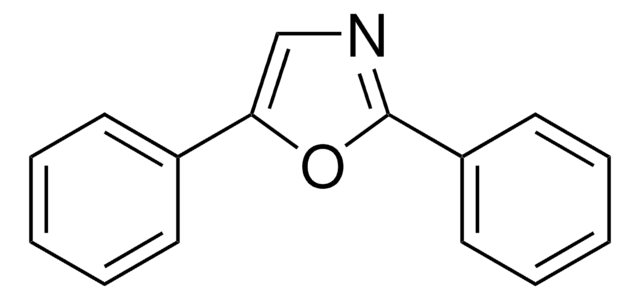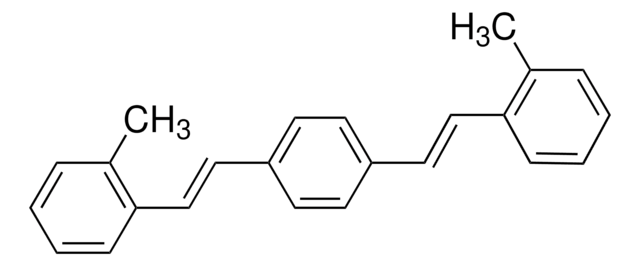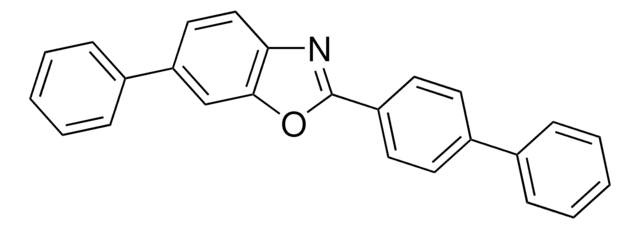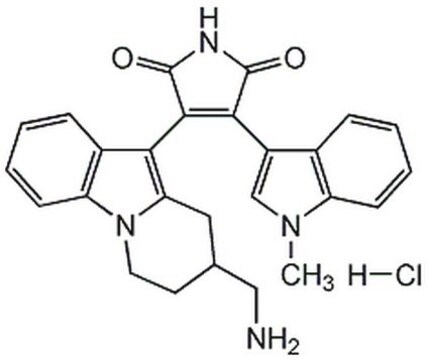P3754
1,4-Bis(5-phenyl-2-oxazolyl)benzene
BioReagent, suitable for scintillation
Sinonimo/i:
1,4-Bis(5-phenyl-2-oxazolyl)benzene, 2,2′-p-Phenylene-bis(5-phenyloxazole), Di(phenyl-5-oxazolyl-2)-1,4-benzene, POPOP
About This Item
Prodotti consigliati
Nome Commerciale
BioReagent
Livello qualitativo
Stato
powder
Punto di fusione
242-246 °C (lit.)
Compatibilità
suitable for scintillation
Stringa SMILE
c1ccc(cc1)-c2cnc(o2)-c3ccc(cc3)-c4ncc(o4)-c5ccccc5
InChI
1S/C24H16N2O2/c1-3-7-17(8-4-1)21-15-25-23(27-21)19-11-13-20(14-12-19)24-26-16-22(28-24)18-9-5-2-6-10-18/h1-16H
MASVCBBIUQRUKL-UHFFFAOYSA-N
Cerchi prodotti simili? Visita Guida al confronto tra prodotti
Descrizione generale
Applicazioni
Caratteristiche e vantaggi
- High fluorescence quantum yield.
- High molar absorptivity.
- Large Stokes Shift.
- High Photostability in most organic solvents.
Prodotti correlati
Avvertenze
Warning
Indicazioni di pericolo
Consigli di prudenza
Classi di pericolo
Acute Tox. 4 Oral - Eye Irrit. 2
Codice della classe di stoccaggio
11 - Combustible Solids
Classe di pericolosità dell'acqua (WGK)
WGK 2
Punto d’infiammabilità (°F)
Not applicable
Punto d’infiammabilità (°C)
Not applicable
Dispositivi di protezione individuale
dust mask type N95 (US), Eyeshields, Gloves
Scegli una delle versioni più recenti:
Possiedi già questo prodotto?
I documenti relativi ai prodotti acquistati recentemente sono disponibili nell’Archivio dei documenti.
I clienti hanno visto anche
Il team dei nostri ricercatori vanta grande esperienza in tutte le aree della ricerca quali Life Science, scienza dei materiali, sintesi chimica, cromatografia, discipline analitiche, ecc..
Contatta l'Assistenza Tecnica.








